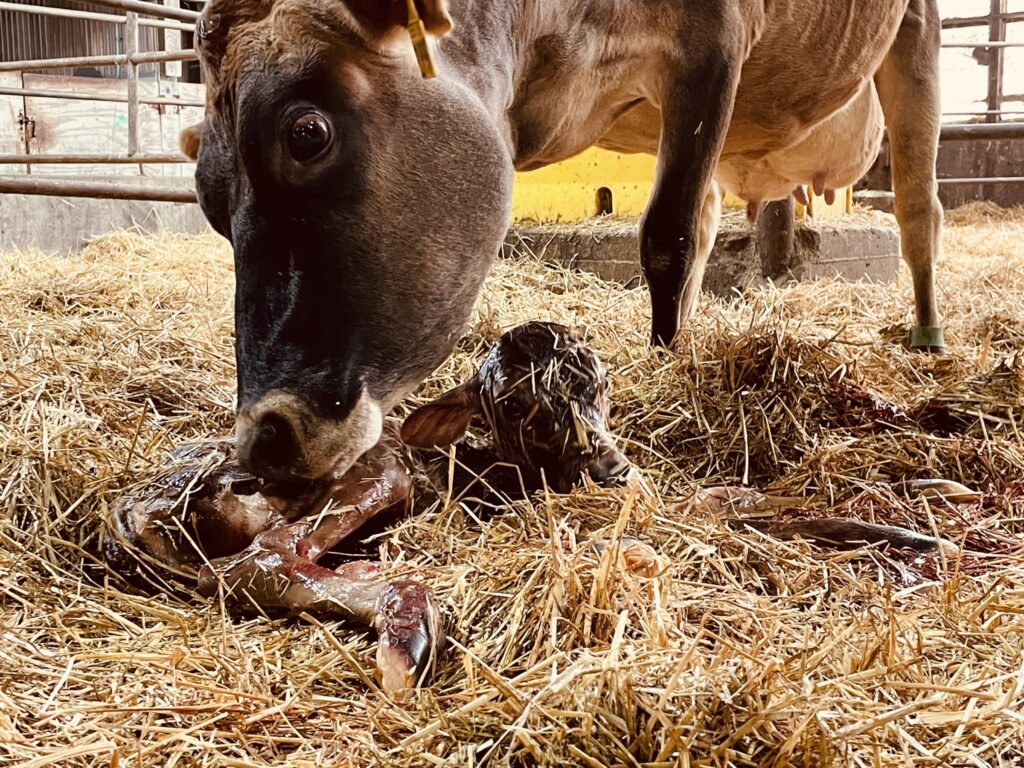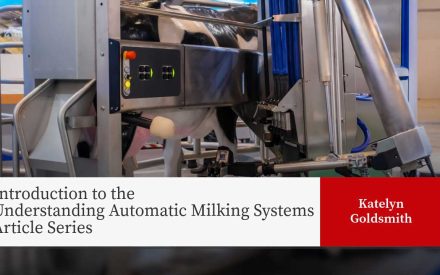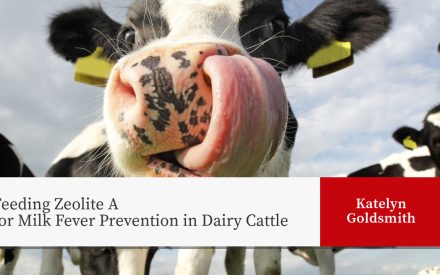Even though hypocalcemia, commonly known as milk fever, has been a fresh cow problem for years, it has been addressed through nutritional management during the dry period and early lactation to decrease clinical cases to less than 1%. However, 73% of 3rd and greater lactation animals have had subclinical hypocalcemia.

What is milk fever?
Calcium is an essential mineral that plays an active role in skeletal tissue, smooth muscle, nerve, and immune functions within the cow. Calcium is required for milk synthesis and normal body functions such as muscle contraction and nerve impulses.
The dairy cow obtains calcium from her diet or her bones. After calving, a cow faces a sudden increase in milk production, increasing her need for calcium by 400% compared to the dry period. To meet this demand, the cow utilizes the calcium from her diet and mobilizes stored calcium from her bones. Milk fever occurs when blood calcium levels are depleted faster than replenished in the blood and bones. This deficiency in blood calcium can lead to health problems and is estimated to cost $150 per clinical or subclinical case of milk fever.
Milk fever can be associated with other metabolic problems in cows, including retained placenta, ketosis, mastitis, uterine infections, and fatty liver syndrome.
Risks for milk fever
Risk factors associated with milk fever include:
- Cows 5 years or greater.
- High production cows.
- Jersey breed. One reason is Jersey cattle have fewer Vitamin D receptors than Holstein cattle. Vitamin D is needed to optimize intestinal calcium and phosphorus absorption.
- Cows with a history of hypocalcemia.
- Pre-fresh diets high in potassium and calcium.
- High calcium intake before calving followed by low calcium intake after calving due to diet or feed intake.
- Low roughage intake.
Symptoms
Most cases of milk fever occur between calving and approximately 3 days after calving, with the onset of milk production. Clinical milk fever occurs when blood calcium levels are less than 5.0 mg/dL and is divided into 3 stages, based on the severity.
- Stage 1 often goes unobservable because of the short duration. Signs include loss of appetite and poor moving GI tract, excitability, nervousness, hypersensitivity, cold ears, weakness, weight shifting, and shuffling of hind feet.
- Stage 2 can last 1 to 12 hours. Signs include the affected animal lying down with the head in a tuck position. The animal appears dull and listless, with cold ears and a dry nose, incoordination with walking, and muscle trembling. Other signs include an inactive digestive system and constipation. A decreased body temperature and a rapid heartbeat exceeding 100 beats per minute are common.
- Stage 3 is characterized by the animal’s inability to stand and progressive loss of consciousness.
However, based on a University of Florida study, cows with more than 5.0 mg/dL but less than 8.5 mg/dL 12 to 24 hours post-partum have subclinical milk fever, showing no visible outward signs of the metabolic disorder. On-farm diagnosis of subclinical milk fever is difficult and is best suited for a lab. If there are concerns of subclinical milk fever within the herd, consult your veterinarian and nutritionist.
Treatment
Working with your veterinarian through a valid veterinarian-client-patient-relationship, or VCPR, establishes a protocol for your dairy herd in treating clinical milk fever cases. The University of Minnesota School of Veterinary Medicine shares the defining question when determining how to treat milk fever is “Is the cow standing?”
- Cow is not standing: Most clinical milk fever cases where cows are down and not standing are treated intravenously with calcium chloride or calcium propionate due to absorption ability. Once a cow has responded to the IV treatment by standing, follow up with 1 oral calcium bolus when she stands and a second bolus 12 hours later. If a cow does not respond to the IV treatment, do not provide calcium boluses, as muscle function has not returned and may cause a cow to choke. Seek veterinary guidance for further treatment.
- Cow is standing: According to UW-School of Veterinary Medicine Dr. Gary Oetzel, provide 1 oral calcium bolus at calving and a 2nd bolus 12 hours later. It is important to understand not to give IV calcium to a cow with subclinical milk fever and no symptoms. Cows still standing can safely absorb all the calcium they need orally. A Netherlands study showed administering IV calcium to a cow with no symptoms can result in a short-term oversupply of calcium (hypercalcemia) leading to a long-term decrease in blood calcium concentration due to the cow increasing excretion of calcium to get rid of the excess.
Prevention and control
Feeding close-up dry cows low calcium (Ca restriction) and low potassium forage diets pre-fresh can help minimize hypocalcemia. Magnesium plays an important role in maintaining calcium homeostasis, thus feeding higher dietary magnesium pre-fresh can also lower the risk for hypocalcemia. Feeding anionic salts for 21 days pre-fresh and properly managing a low DCAD diet has been shown to reduce the incidence of subclinical hypocalcemia by assisting with the cow’s homeostasis functions to increase calcium resorption from the bone in preparation for the increased demand for calcium with the onset of lactation.
Conclusion
It is practically impossible to eliminate hypocalcemia from a dairy herd, but understanding the cause and adopting best management practices to prevent this metabolic disorder will minimize the cascading effect of other metabolic disorders.

 Introduction to the Understanding Automatic Milking Systems Article Series
Introduction to the Understanding Automatic Milking Systems Article Series Negative DCAD Diets for Milk Fever Prevention in Dairy Cattle
Negative DCAD Diets for Milk Fever Prevention in Dairy Cattle  🎧 Listen: Lameness affects up to 50% of dairy cows during their lifetime
🎧 Listen: Lameness affects up to 50% of dairy cows during their lifetime Feeding Zeolite A for Milk Fever Prevention in Dairy Cattle
Feeding Zeolite A for Milk Fever Prevention in Dairy Cattle


